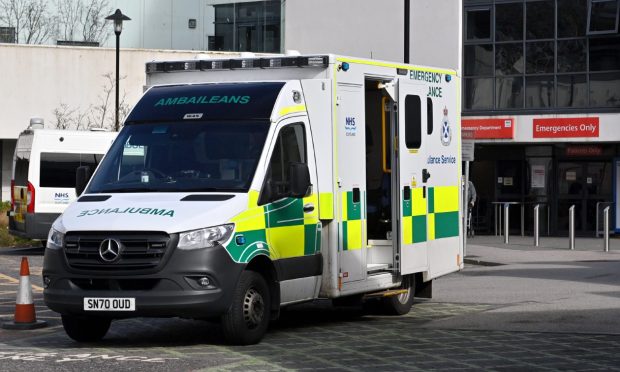
Scotland’s ambulance service is at “breaking point” and could crumble completely as we head into the cold winter months, union leaders have warned.
The stark intervention comes after SNP health chief Neil Gray was forced to apologise to an Aberdeenshire family who had to fight to save their baby’s life during a traumatic long wait for medics to arrive.
The family, from Torphins, performed CPR on the new-born whilst receiving over-the-phone instructions from 999 call handlers hundreds of miles away in Yorkshire.
When crews finally arrived on the scene after around 40 minutes, mum and baby had to be transported in separate vehicles wrapped in blankets because one had no heating.
Health chiefs are investigating why it took so long for help to arrive and why the ambulances did not appear to have been sent from the nearest dispatch centre, just seven miles away in Banchory.
Union leaders are calling for answers over the ordeal but warn the picture is grim across the country because of a lack of investment and necessary planning.
Services at breaking point
James O’Connell, Unite’s lead negotiator for the health service said: “Unite’s fear is that the system is at breaking point.
“There is minimal joined up policy and minimal investment to help our NHS and emergency services workers, which will inevitably lead to the system breaking.”
He added: “Unite needs to see the Scottish Government targeting resources at frontline and emergency services as we approach winter.
“Measures need to be taken to expand acute patient capacity in hospitals and to reduce hospital transfer times at accident and emergency wards.
“This is where there is an acute bottleneck of pressure placed on our health services and where we need resources targeted to free up our emergency responders.”
The Torphins family’s traumatic experience was raised at the Scottish Parliament on Thursday.
In response to questioning from Aberdeenshire West MSP Alexander Burnett, Health Secretary Neil Gray said: “I’m aware of the media reports and obviously my apologies to the family in that case.
“I can understand, as a father, the difficulty that family would have felt and the challenge of going through that process. I recognise that. I understand it.”
But the exchange prompted Orkney MSP Liam McArthur to reveal he has scheduled his own talks with the chief executive of the Scottish Ambulance Service after being approached by constituents highlighting examples of further unnecessary delays.
We reported previously how the Torphins family’s 999 distress call was picked up by call handlers in northern England, who reportedly struggled to find the rural Aberdeenshire address.
Union leaders demand answers
GMB Scotland, the biggest trade union in the Scottish Ambulance Service representing crews and call handlers, said the incident four weeks ago raises concerns.
Karen Leonard, GMB Scotland organiser in the service, said the union will ask for an explanation of why the call was transferred to England.
She said: “Calls are diverted to England when no operators in Scotland are available but this call was received at 5am.
“That would suggest the issue was not the number of calls being received but the number of staff on duty.”
Emergency calls for an ambulance in Scotland are sent to one of three centres, in Glasgow, Edinburgh and Inverness.
If the call is not answered swiftly, however, it will be diverted to ambulance services elsewhere in the UK where handlers log details before crews are dispatched locally.
Leonard said: “Patients will be reassured that contingency plans are in place to ensure calls are answered quickly but, in very fraught situations, might be alarmed at being diverted to England.
“They may also be concerned that call handlers in England lack the local knowledge that might save a little time.
“Those minutes can mean the difference between life and death and call handling desks in Scotland should be staffed to cope with an unexpectedly high number of calls.
“We will be seeking an explanation of this incident and carefully examining the wider implications for ambulance crews, operators and every patient relying on them.”
The Scottish Government said patient safety is a top priority for the ambulance service.
It added: “We also recognise the pressure felt by ambulance staff and we are grateful for their vital contribution in the face of sustained demand.
“We continue to work closely with boards and the Scottish Ambulance Service to ensure there are no unnecessary delays in transferring patients to hospital and emergencies are responded to urgently.
“This includes continued investment in the SAS workforce with 1,388 additional staff recruited since 2020, and further recruitment underway this year.”

Enjoy the convenience of having The Sunday Post delivered as a digital ePaper straight to your smartphone, tablet or computer.
Subscribe for only £5.49 a month and enjoy all the benefits of the printed paper as a digital replica.
Subscribe © Kris Miller / DCT Media
© Kris Miller / DCT Media